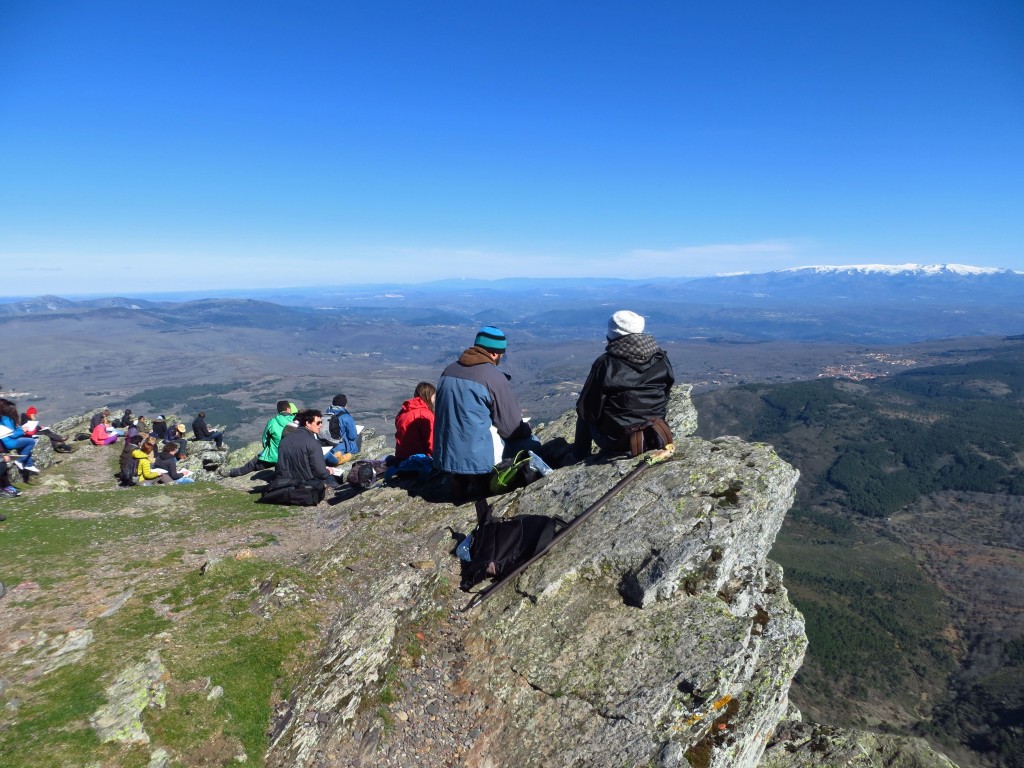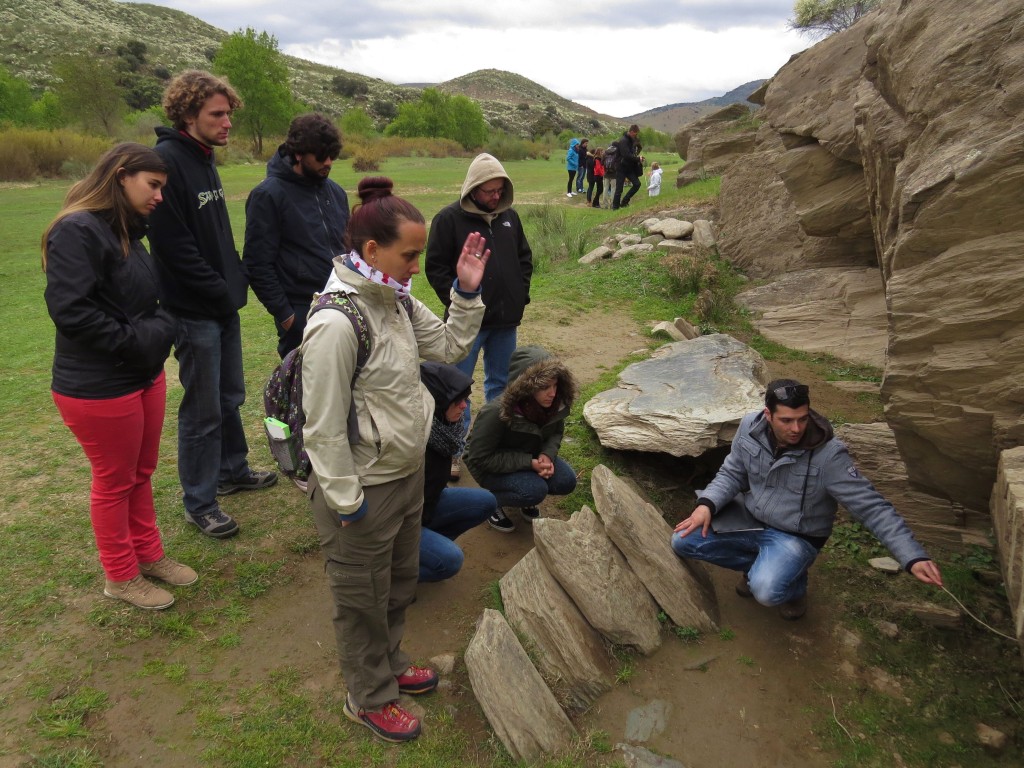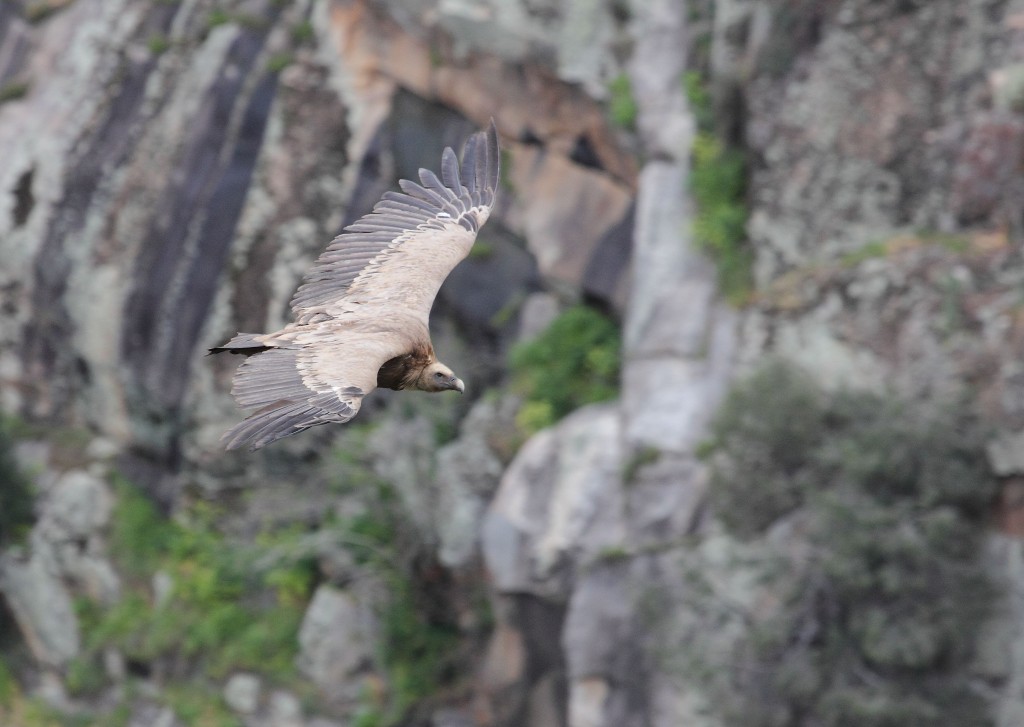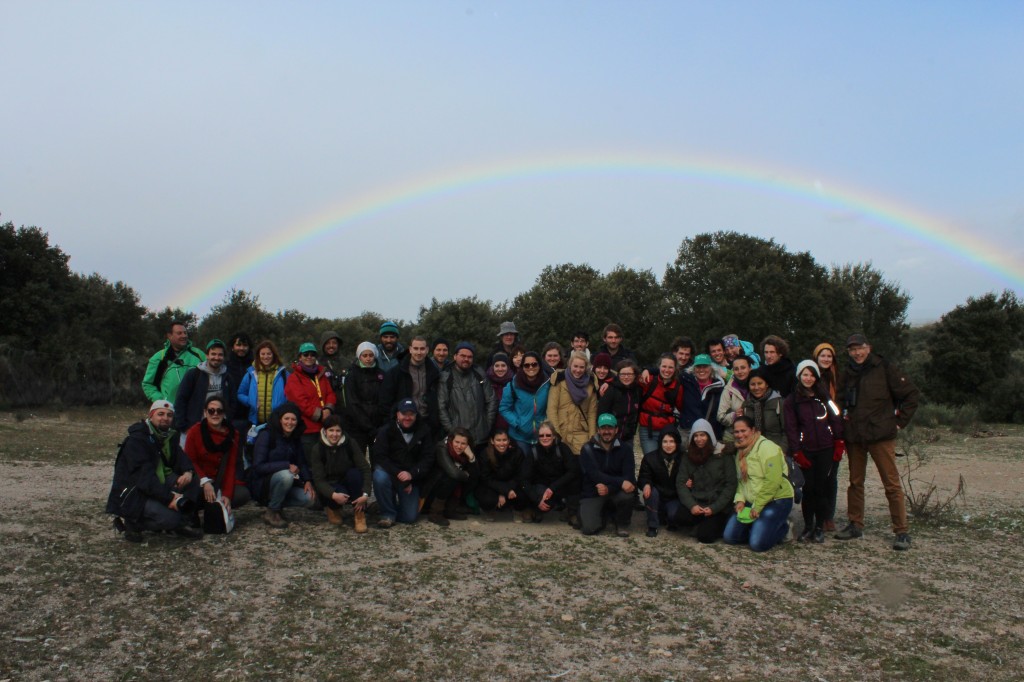35 students and 15 lecturers from universities in Bulgaria, Croatia, Portugal, Spain, Sweden and the Netherlands took part in the second edition of the ‘European Wilderness Entrepreneurship’ school from 20/3 to 4/4, a part of the Erasmus Intensive Programme. Indulging in a unique learning experience in Western Iberia.

Students analysed the local setting by interviewing local stakeholders and talking to mayors, by looking at visitors centres, visiting villages and nature reserves and getting familiar with the area. They experienced this rewilding area as visitors, learned about the impact of tourism on the region, but also took an economic perspective by working with a business model. Participants also learned about the ecology and wildlife of Western Iberia during field trips in Rewilding Europe’s partner areas Campanarios de Azaba in Spain and the Faia Brava Reserve in Portugal. The students worked in international, interdisciplinary teams and analysed opportunities for nature entrepreneurship. At the end of the two week programme, they presented their findings and business ideas for the area to local stakeholders from Portugal and Spain. The ideas varied from education for primary and high school pupils, mobile apps to spot wildlife, and from nature trails to green business incubators. This is what the participants say themselves:
Outdoor classroom
Julia Kinževskaja from Van Hall Larenstein University for Applied Sciences in The Netherlands, originally from Estonia, explains the value of this learning experience ‘in the wild’: “It’s better to see it one time than to hear it one hundred times”. There is a big difference between reading statistics and interviewing the citizens, between listening to professors of business studies and talking with experienced entrepreneurs, between looking at photos of mountains and climbing them yourself. I strongly believe that everything must be learned by practice; therefore I am sincerely grateful for the opportunity to see what Rewilding Europe is trying to do, from the inside. This experience is priceless for our future and hopefully for the future of nature as well.”

Many participants were very eager to step outside the theoretical walls of lecture halls and literature, which is both a stimulus and a challenge. Each place has its own unique history, its relation to the landscape and its valuable bank of practices and experiences. The setting turned out to be a positive surprise for all; Iva Dujic from University of Zadar in Croatia describes the programme as a beautiful experience for anyone who enjoy nature, who love to meet new people and who are open to new experiences.
The extraordinary cultural and natural heritage of the region was clearly inspirational to all participants, who shared their newly discovered fondness for the region with the residents. This in turn reinforced the feeling among residents and stakeholders that this large group of foreign students shared their concerns and tried to find out effective plans for a sustainable future in the area.
Of course, as in any such programme, there were challenges, especially in the initial phases. In retrospect, Sérgio Miguel from Aveiro University in Portugal adds “it is important to step outside our usual environment to meet new knowledge and take part in new adventures”.
Innovation and inspiration can only bloom when we are open-minded about taking on new challenges. Iva Duijic continues: “initially it seemed hard to work in multicultural student teams, but in the end our eventual weaknesses turned out to be advantages, and as a proof of this we have our final business project plans. I hope we brought at least a bit of fresh new ideas for the local residents of Western Iberia and I hope we did it in a suitable way to preserve nature.”
At the end of the programme, the shared feeling among stakeholders, students and staff was that of a truly successful programme. Jan Claus Di Blasio, from Lund University in Sweden and originally from Italy, comments on this: “Two weeks have not made us experts. However, they have showed us how both the local and the international levels can learn from each other. As participants and researchers, we have learned a lot, which comers from interacting with those who care most about the area’s future. On the other hand, I think also our ideas, world views and experiences, inspired the local people that we met.”
The rich biodiversity

So what did we meet from the biodiversity and natural heritage of the area? Here is a complete list from Atanas Grozdanov, a lecturer and ornithologist from the Sofia University, Bulgaria.
As our trip started with lectures in Salamanca, we had the opportunities to watch birds living in the urban environment: white stork, wood pigeon, greenfinch, black redstart, spotless starling and kestrel. During the travel westwards, to the village La Alberca, many birds of prey were encountered soaring over the typical dehesa landscape: griffon and black vultures, black and red kites. In the vicinity of La Alberca where we stayed most of the time, the vultures were still present as well as mountain and forest species like blackbird, nuthatch, wren, blackcap, robin and greenfinch. As the altitude and the habitat changed when we visited the mountain top Peña de Francia, we observed some new species: blue rock thrush, rock bunting, raven, golden eagle, the first Egyptian vultures and we also were lucky to meet the reintroduced, and typical for the region, Spanish ibex.
A very interesting day for our wildlife experience was when we visited Rewilding Europe’s site Campanarios de Azaba. The typical blue-winged magpies were there, as well as many griffon and black vultures, attracted by the artificial feeding site, designed also for visiting wildlife photographers. The Black stork was also observed here for the first time during the trip. When we travelled to Portugal the list of animal species was extended. In the surrounding of Figueira de Castelo Rodrigo we observed the elusive Bonelli’s Eagle, blue-winged magpie, subalpine warbler, Iberian grey shrike, and blackcap. In the Faia Brava reserve we had many vulture observations, including some new raptors: booted eagle and short-toed eagle. We also found a great variety of warblers characteristic for the Mediterranean, such as subalpine, Dartford’s and Sardinian warblers. Singing spring species were also there: cuckoo, corn bunting, and serin. The observation of these species helped the group of lecturers and students better realize the rich biodiversity of this area – one of the most important factors for sustainable business plans for Rewilding Europe, which were designed during this Intensive Programme on ‘European Wilderness Entrepreneurship’.
Closing information

This year students and lecturers came from the following institutions: Lund University (Sweden), University of Zadar (Croatia), Van Hall Larenstein University of Applied Sciences (the Netherlands), Wageningen University (the Netherlands), Sofia University (Bulgaria), University of Aveiro (Portugal), University of Santiago de Compostela (Spain) and University of Salamanca (Spain). The first two days of the IP were hosted by the University of Salamanca. This programme was organized in cooperation with the local Rewilding Europe’s partners Fundación Naturaleza y Hombre (Spain) and Associação Transhumância e Natureza (Portugal) and the Biosphere Reserve (Spain) to whom we are grateful for their support throughout the programme. Funding from the EU Lifelong Learning Programme partially supported our travel, food, lodging and some organisational expenses.
For more information, media and student output, please, see the website of Van Hall Larenstein University of Applied Sciences, the lead partner of the second edition of the Erasmus Intensive Programme “European Wilderness Entrepreneurship”.
With the contribution of Sérgio Miguel, Julia Kinzevskaja, Jelmer van Tol, Iva Dujic and Atanas Grozdanov
